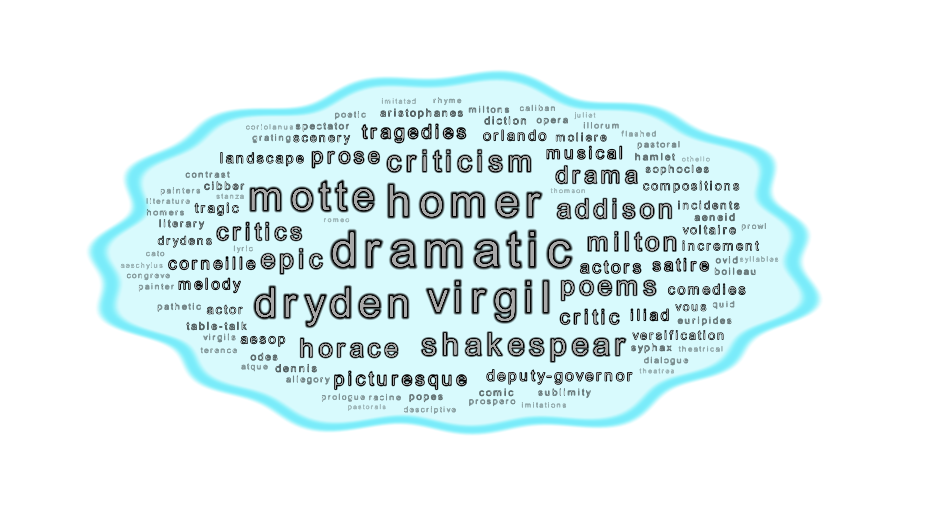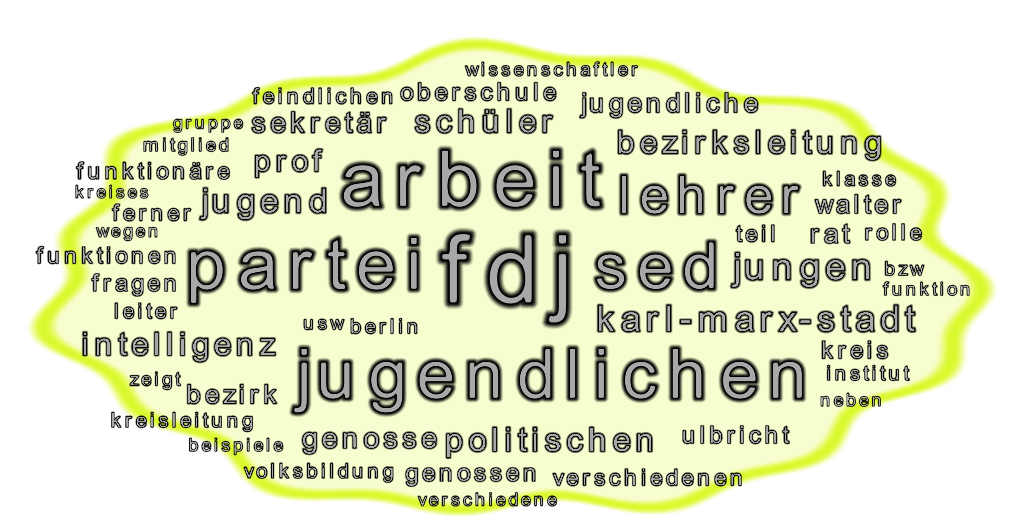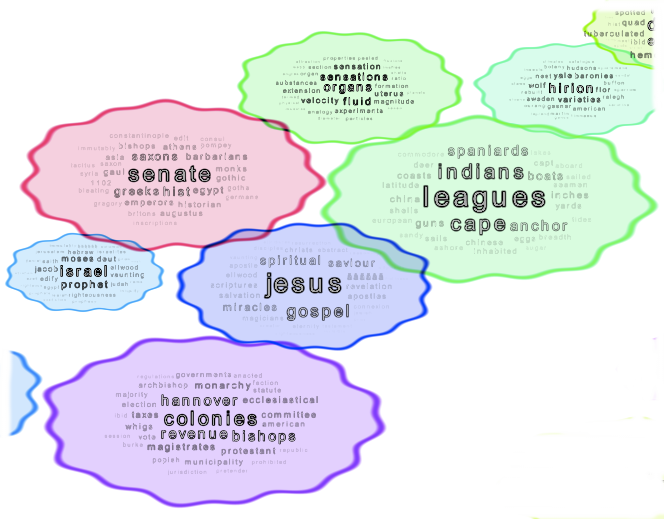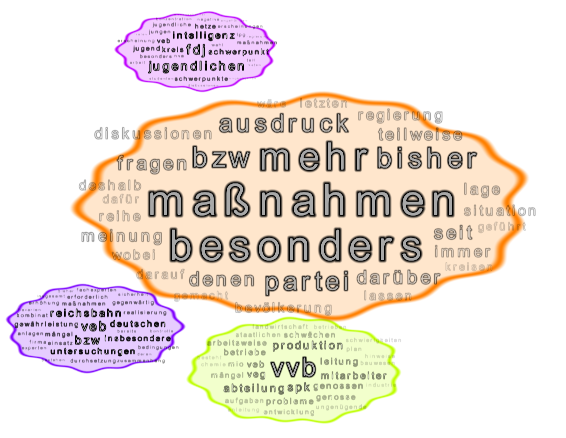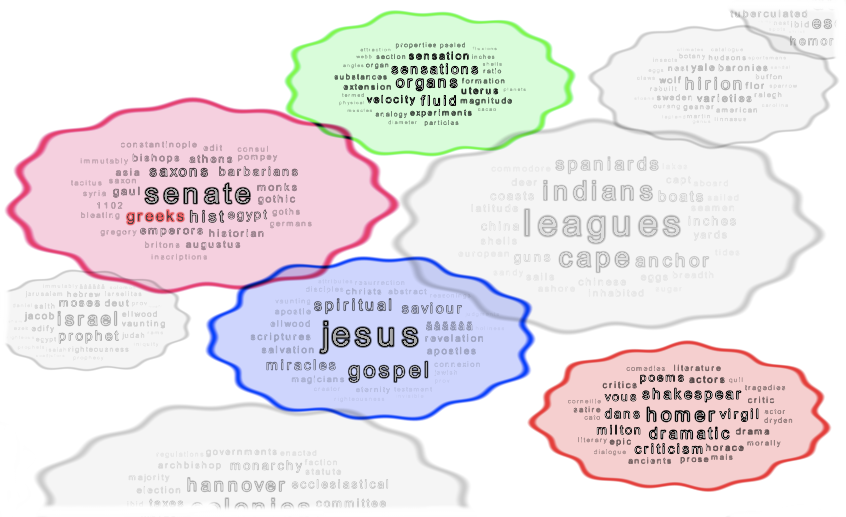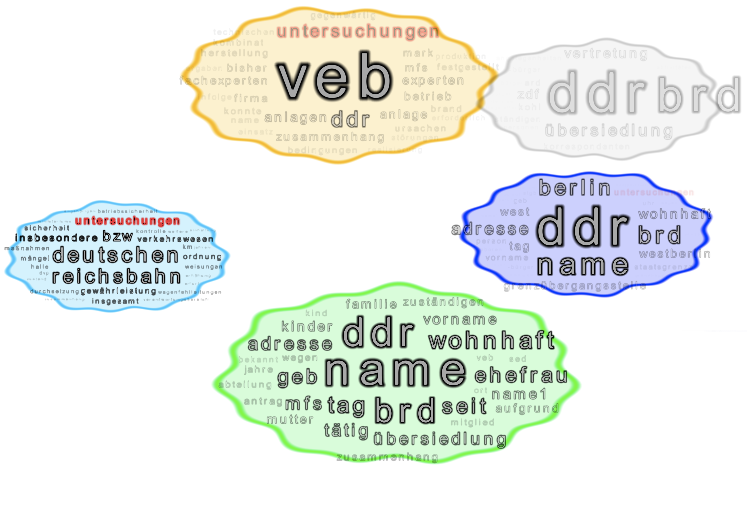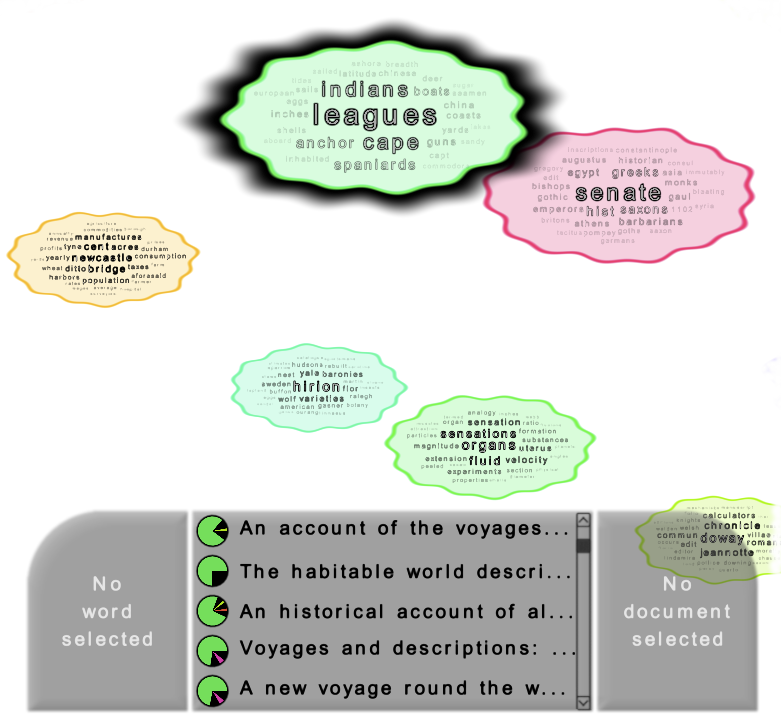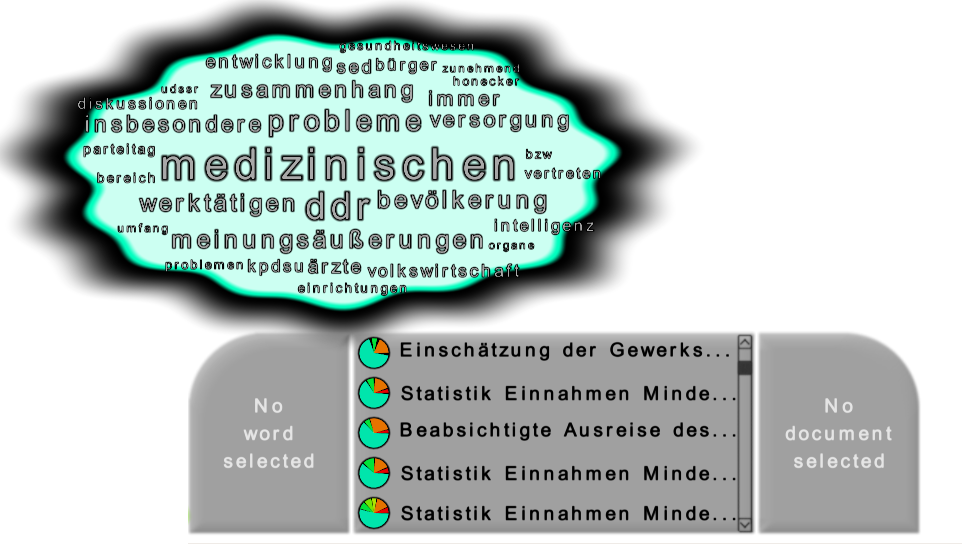Works Cited
AlSumait 2009 AlSumait, L., Barbará, D., Gentle,
J., Domeniconi, C. "Topic significance ranking of LDA generative models", Machine Learning and Knowledge Discovery in Databases
(2009): 67–82.
Blei 2003 Blei, D. M., Ng, A. Y., Jordan, M. I.
"Latent dirichlet allocation", The Journal of Machine
Learning Research, 3 (2003):993–1022.
Blei 2009 Blei, D. M., Lafferty, J. D. Topic models.
In A. N. Srivastava and M. Sahami (eds) Text Mining:
Classification, Clustering, and Applications (2009): 71. CRC
Press.
Blei 2012 Blei, D. M. "Topic Modeling and Digital
Humanities", Journal of Digital Humanities, 2.1,
January 2012.
Boyd-Graber 2009 Boyd-Graber, J., Chang, J.,
Gerrish, S., Wang, C., Blei, D. M. "Reading tea leaves: How humans interpret
topic models", Advances in Neural Information Processing
Systems, 31 (2009).
Cao 2010 Cao, N., Sun, J., Lin, Y. R., Gotz, D., Liu,
S., Qu, H. "FacetAtlas: Multifaceted Visualization for Rich Text Corpora",
IEEE Transactions on Visualization and Computer
Graphics, 16.6 (2010): 1172–1181.
Chaney 2012 Chaney, A., Blei, D. M. "Visualizing
Topic Models", Sixth International AAAI Conference on
Weblogs and Social Media (2012).
Chang 2010 Chang, J., Blei, D. M. "Hierarchical
relational models for document networks", The Annals of
Applied Statistics, 4.1 (2010): 124–150.
Elmqvist 2008 Elmqvist, N., Dragicevic, P.,
Fekete, J. D. "Rolling the dice: Multidimensional visual exploration using
scatterplot matrix navigation", IEEE Transactions on
Visualization and Computer Graphics, 14.6 (2008): 1539–1148.
Gelman 2013 Gelman, A., Shalizi, C. "Philosophy
and the practice of Bayesian statistics", British Journal
of Mathematical and Statistical Psychology, 66.1 (2013):
8–38.
Gopalan 2013 Gopalan, P., Hofman, J. M., Blei, D.
M. :Scalable Recommendation with Poisson Factorization", arXiv.org (2013).
Gretarsson, B., O’donovan, J.,
Bostandjiev, S., Höllerer, T., Asuncion, A., Newman, D., Smyth, P. "Topicnets:
Visual analysis of large text corpora with topic modeling", ACM Transactions on Intelligent Systems and Technology (TIST), 3.2
(2012): 23.
Havre 2000 Havre, S., Hetzler, B., Nowell, L.
ThemeRiver: Visualizing theme changes over time
(2000): 115–123.
Heinrich 2005 Heinrich, G. Parameter estimation for text analysis (2005).
http://www.arbylon.net/publications/textest
Hinneburg 2012 Hinneburg, A., Preiss, R.,
Schröder, R. TopicExplorer: Exploring document collections
with topic models (2012): 838–841.
Johnson 1997 Johnson, N. L., Kotz, S.,
Balakrishnan, N. Discrete Multivariate
Distributions. John Wiley & Sons (1997).
Kohonen 2001 Kohonen, T. Self-Organizing Maps. Springer Science & Business Media
(2001).
Kotz 2000 Kotz, S., Balakrishnan, N., Lloyd Johnson,
N. Continuous Multivariate Distributions: Models and
Applications, 1. John Wiley & Sons, 2nd edition (2000).
Kruskal 2009 Kruskal, J. B., Wish, M. Multidimensional Scaling. Quantitative Applications in the
Social Sciences. SAGE Publications (1978).
Landauer 2008 Landauer, T., Dumais, S. "Latent
semantic analysis", Scholarpedia, 3.11 (2008):
4356.
Manning 1999 Manning, C. D., Schütze, H. Foundations of statistical natural language
processing. MIT Press (1999).
Marchionini 2006 Marchionini, G. "Exploratory
Search", Communications of the ACM, 49.4 (2006):
41–46.
Mei 2008 Mei, Q., Cai, D., Zhang, D., Zhai, C. X.
"Topic modeling with network regularization." In 17th
international conference on World Wide Web (2008): 101–110.
Miller 1998 Miller, N. E., Wong, P. C., Brewster,
M., Foote, H. TOPIC ISLANDS TM-a wavelet-based text
visualization system (1998): 189–196.
Mimno 2011 Mimno, D., Blei, D. M. "Bayesian
checking for topic models." In Proceedings of the
Conference on Empirical Methods in Natural Language Processing
(2011): 227–237.
Münkel 2014 Münkel, D. Die
DDR im Blick der Stasi. Für den Bundesbeauftragten für die Unterlagen des
Staatssicherheitsdienstes der ehemaligen Deutschen Demokratischen
Republik (BStU) (2014).
Niekler 2012 Niekler, A., Jähnichen, P. Matching Results of Latent Dirichlet Allocation for
Text (2012): 317–322.
Oesterling 2010 Oesterling, P., Scheuermann,
G., Teresniak, S., Heyer, G., Koch, S., Ertl, T., Weber, G. H. "Two-stage
framework for a topology-based projection and visualization of classified
document collections", Transactions of the IRE Professional
Group on Audio, (2010): 91–98.
Paulovich 2006 Paulovich, F. V., Minghim, R.
"Text Map Explorer: a Tool to Create and Explore Document Maps", Tenth International Conference on Information Visualisation
(IV’06), (2006): 245–251.
Rosen-Zvi 2005 Rosen-Zvi, M., Griffiths, T. L.,
Steyvers, M. "Learning Author Topic Models from Text Corpora", The Journal of Machine Learning Research
(2005).
Salton 1988 Salton, G., Buckley, C.
"Term-Weighting Approaches in Automatic Text Retrieval", Information processing & management, 24.5 (1988):
513–523.
Sammon 1969 Sammon, J. W. "A nonlinear mapping for
data structure analysis", IEEE Transactions on
Computers (1969).
Snyder 2013 Snyder, J., Knowles, R., Dredze, M.,
Gormley, M. R., Wolfe, T. "Topic Models and Metadata for Visualizing Text
Corpora." In HLT- NAACL (2013): 5–9.
Sparck Jones 1972 Sparck Jones, K. "A
statistical interpretation of term specificity and its application in
retrieval", Journal of documentation, 28.1 (1972):
11–21.
Steele 2010 Steele, J., Iliinsky, N. Beautiful Visualization. Looking at Data through the Eyes of
Experts. O'Reilly Media, Inc. (2010).
Teh 2009 Teh, Y. W., Jordan M. I. "Hierarchical
Bayesian nonparametric models with applications", Bayesian
Nonparametrics (2009): 158.
Wise 1995 Wise, J. A., Thomas, J. J., Pennock, K.,
Lantrip, D., Pottier, M., Schur, A., Crow, V. Visualizing
the non-visual: spatial analysis and interaction with information from text
documents (1995): 51-58.
de Saussure 2001 de Saussure, F. Grundfragen der allgemeinen Sprachwissenschaft. de
Gruyter, 3rd edition (2001).




